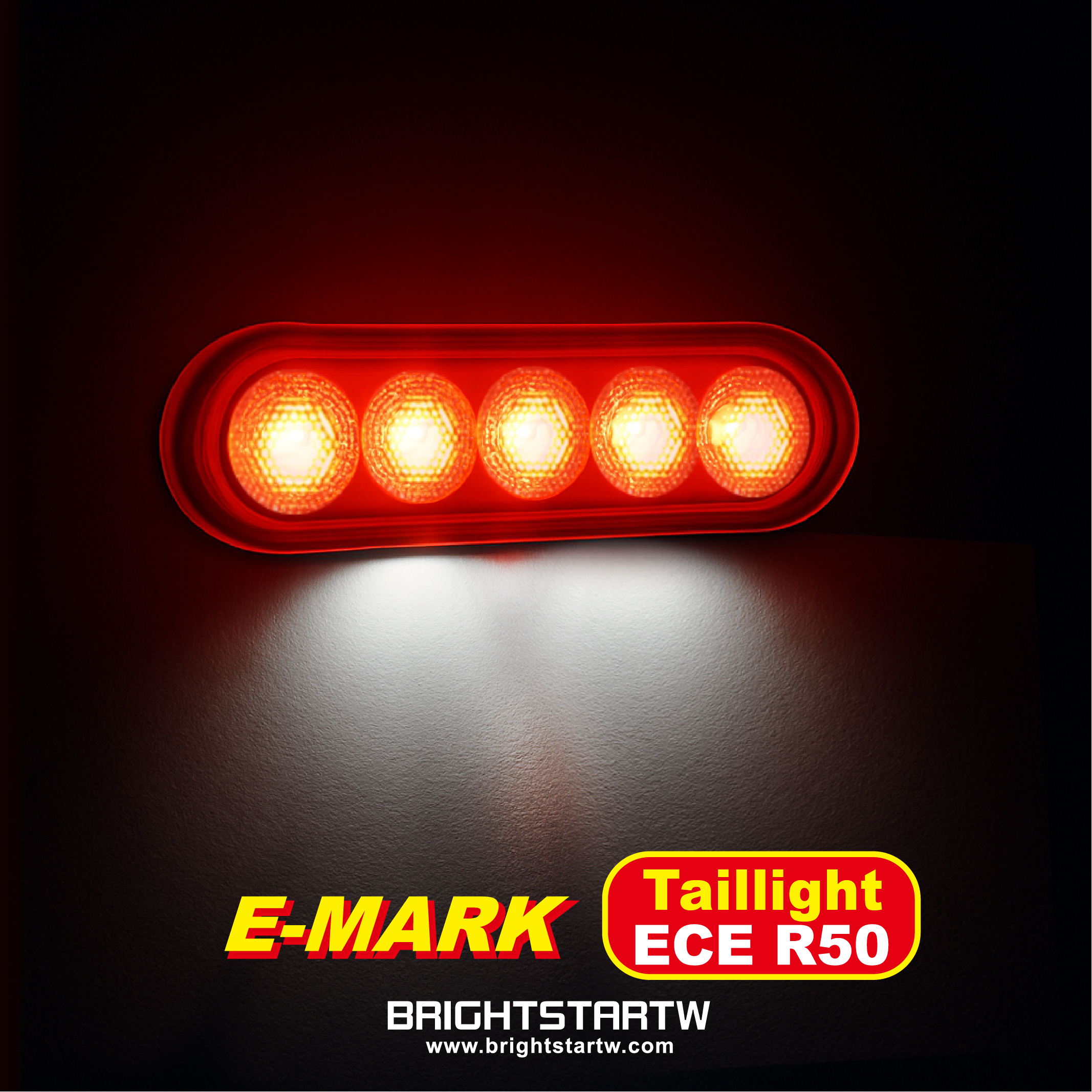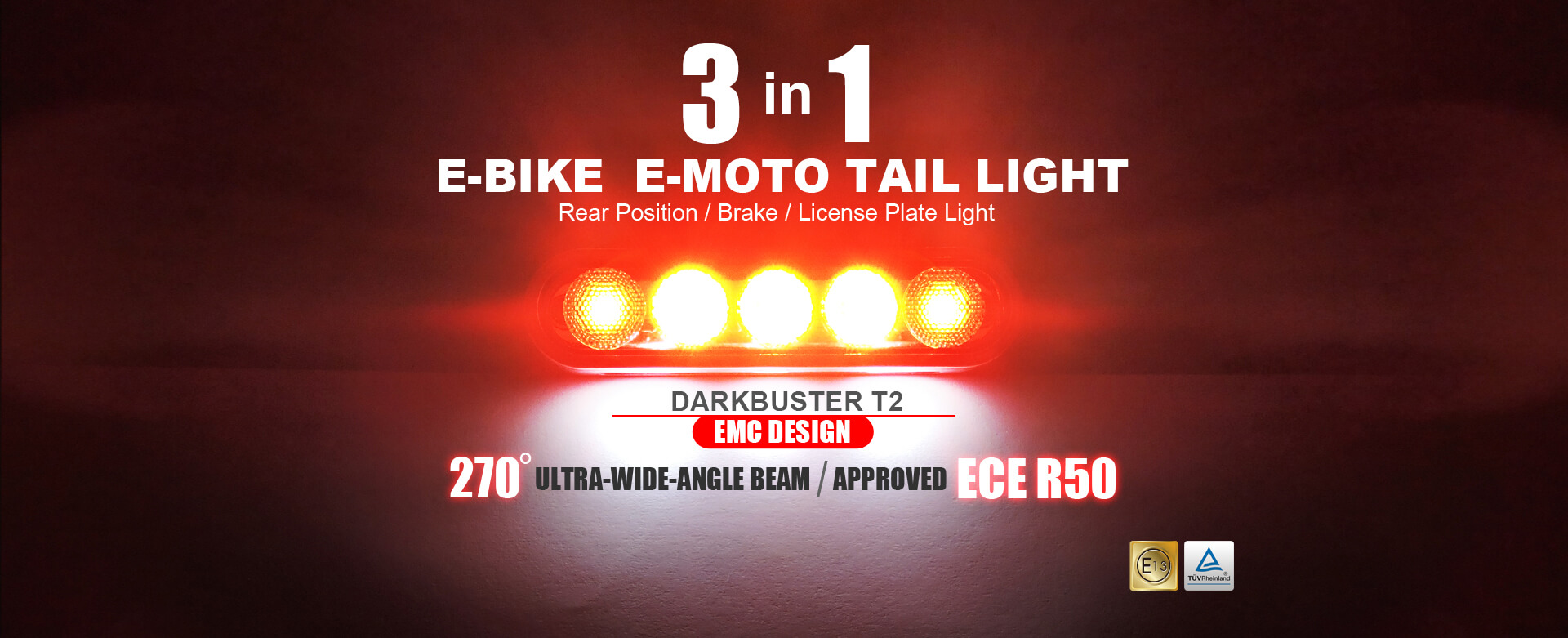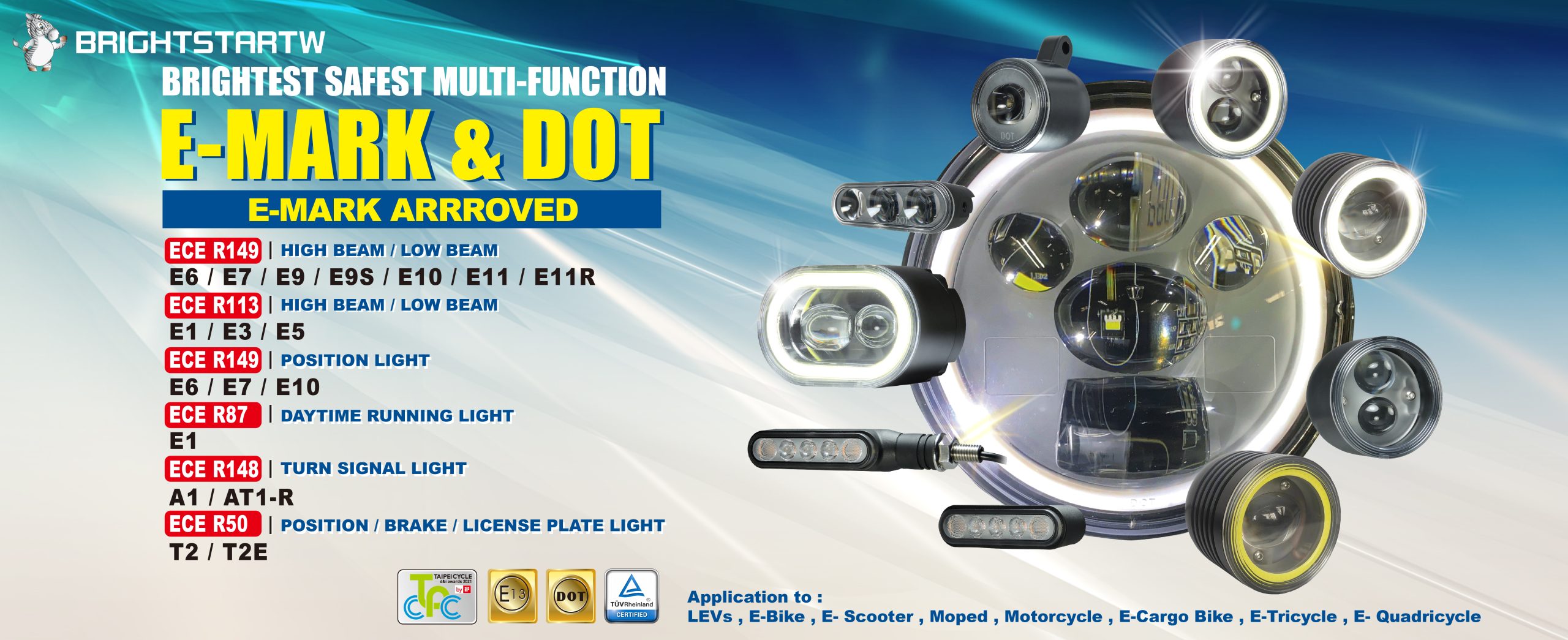By BRIGHTSTARTW — Professional Manufacturer of E-Bike, E-Moto & Speed Pedelec LED Lighting
Speed Pedelec (L1e-B) Rear Lighting Regulations & TÜV Certification
Speed Pedelecs—high-performance electric bicycles capable of reaching 45 km/h—are rapidly expanding across the European market. As these vehicles adopt increasingly advanced Speed Pedelec lighting systems, they are classified as L1e-B vehicles, requiring compliance with the same road-legal lighting regulations applied to motor vehicles. This means the rear tail light is no longer a simple bicycle accessory, but a regulated safety component that must pass E-Mark (ECE R50 / UN R148) and, in many cases, TÜV certification.
This guide provides manufacturers, R&D engineers, QA teams, and procurement managers with a comprehensive overview of lighting requirements, optical performance standards, and TÜV approval processes—helping reduce early-stage design risks and ensuring compliance for EU market entry.
1. Why Speed Pedelecs Require Stricter Lighting Regulations
At 45 km/h, following vehicles have significantly less reaction time compared to traditional e-bikes. A compliant rear lamp must therefore deliver:
. High visibility at long distances
. Stable and accurate light distribution
. Fast and clear brake-light signaling
. Reliable performance across temperature and voltage variations
Enhanced optical performance directly contributes to safer nighttime riding and improved visibility under adverse weather conditions.
1.1 E-Mark Requirements (ECE R50 / UN R148)
E-Mark certification is mandatory for all Speed Pedelec rear lighting products. Core requirements include:
. Minimum luminous intensity
. Brake-to-tail brightness ratio
. Light distribution & uniformity
. Horizontal and vertical viewing angles
. Red-light chromaticity (CIE color coordinates)
. Structural design, markings, and installation requirements
Products without E-Mark approval cannot be used on EU roads.
https://unece.org/fileadmin/DAM/trans/main/wp29/wp29regs/2013/R050r3e.pdf
1.2 Optical Performance Standards for High-Speed E-Bikes
To ensure safe operation at 45 km/h, rear lamps must deliver:
. Strong luminous output for long-range recognition
. Precision-engineered optical patterns
. Rapid brake-light response
. Stability under thermal and electrical variation
These factors ensure consistent signal visibility for car drivers, riders, and surrounding road users.
Overview of Future Amendments to Lighting Regulations R148, R149, and R150
2. TÜV Certification: The Most Trusted Third-Party Verification
TÜV is one of Europe’s most recognized independent testing organizations. Its certification process ensures that rear lamps meet
road-legal, optical, electrical, and durability standards required for Speed Pedelec homologation.
Typical TÜV testing includes:
. E-Mark regulation compliance review
. Luminous intensity, distribution, and brightness-ratio tests
. CIE chromaticity validation & thermal stability
. High/low temperature endurance
. Humidity, vibration, and mechanical durability tests
. Waterproof and dustproof (IP) verification
. Electrical behavior, voltage tests, and EMC validation
Passing TÜV certification significantly reduces homologation risk for vehicle manufacturers and ensures repeatable mass-production quality.
Learn more about TÜV SÜD’s ECE vehicle certification and homologation services.
3. Choosing E-Mark Certified Rear Lights Early Reduces Major Development Risks
For vehicle manufacture and Speed Pedelec brands, adopting pre-certified E-Mark rear lighting modules provides major advantages:
. Avoid costly redesigns caused by non-compliant optical patterns
. Prevent mold modifications or re-tooling of optical components
. Reduce resubmission time for regulatory testing
. Shorten entire-vehicle homologation
. Lower project risk and reduce certification delays
. Accelerate Time-to-Market in competitive EU markets
4. TÜV Test Categories (Summary )
Below is a structured overview of TÜV test classifications:
| Category | Test Items | Purpose |
|---|---|---|
| General Requirements | Structure, markings, installation | Core regulatory compliance |
| Chromaticity | CIE color coordinates, thermal/voltage stability | Accurate and consistent red-light output |
| Opto-Electrical Parameters | Luminous intensity, brake ratio, electrical behavior, EMC | Optical consistency & electrical safety |
| Light Distribution | Angular visibility and uniformity | Reliable visibility from multiple viewing angles |
5. Conclusion: Safety, Compliance, and Optical Performance Define Speed Pedelec Success
Rear lighting is one of the most critical safety components for Speed Pedelecs operating at higher speeds.
Choosing E-Mark-compliant and TÜV-certified lighting offers manufacturers:
. Lower R&D and regulatory risk
. Faster homologation timelines
. Higher reliability and durability
. Stronger brand credibility
. Accelerated market launch
About BRIGHTSTAR
BRIGHTSTAR provides complete optical design expertise, durability engineering services, and regulatory certification support.
Our team helps vehicle manufacture build compliant, high-performance lighting systems tailored for next-generation Speed Pedelec and electric mobility solutions.
📩 Contact us: [email protected]





